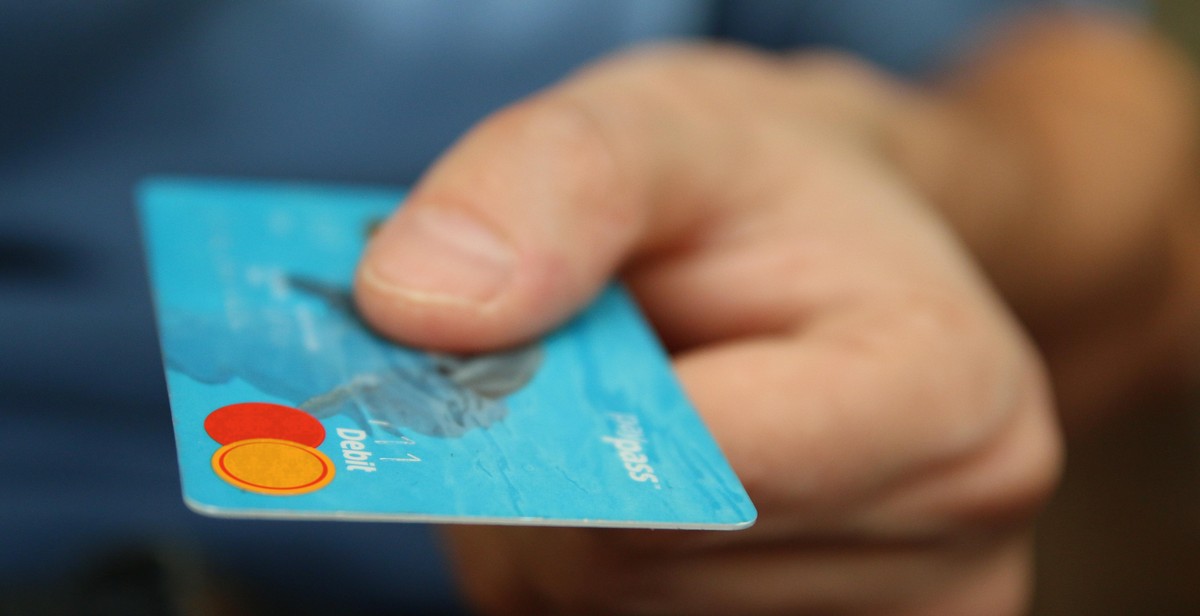How to Manage Personal Debt: Strategies for Debt Repayment and Financial Freedom
Debt is a common financial challenge that many people face. Personal debt can come from various sources such as credit cards, student loans, car loans, and mortgages. While it may seem overwhelming, there are strategies for managing personal debt that can help you achieve financial freedom.
Understanding Personal Debt
Personal debt is money that you owe to lenders or creditors. It can be incurred through borrowing money to finance a purchase, paying for goods or services on credit, or taking out loans to pay for education or a home. Personal debt can be categorized as either secured or unsecured. Secured debt is backed by collateral, such as a car or home, while unsecured debt is not.
It is important to understand the terms and conditions of your debt, including the interest rate, payment schedule, and any penalties for late payments or defaults. Failure to repay your debt can lead to a damaged credit score and financial hardship.
Strategies for Debt Repayment
Managing personal debt requires a disciplined approach to debt repayment. One strategy is to prioritize debt with the highest interest rates and pay them off first. Another strategy is to consolidate debt into one manageable payment through a balance transfer or debt consolidation loan.
It is also important to create a budget and stick to it, cutting back on unnecessary expenses and increasing income through side hustles or part-time work. Seeking the help of a financial advisor or credit counselor can also provide valuable guidance and support in managing personal debt.
By understanding personal debt and implementing effective strategies for debt repayment, you can achieve financial freedom and improve your overall financial well-being.
Assessing Your Personal Debt
Before you can create a plan to manage your personal debt, you need to assess your current financial situation. This involves gathering information about your debt and calculating your debt-to-income ratio.
Gathering Information About Your Debt
The first step in assessing your personal debt is to gather information about all of your debts. This includes credit card balances, personal loans, car loans, student loans, and any other debts you may have. Make a list of each debt, including the current balance, interest rate, and minimum monthly payment.
It’s important to be thorough in this process. Don’t forget about small debts, such as balances on store credit cards or medical bills. Even though these debts may be small, they can add up and contribute to your overall debt load.
Calculating Your Debt-to-Income Ratio
Once you have a complete list of your debts, it’s time to calculate your debt-to-income ratio. This is a measure of how much of your monthly income goes toward paying off debt.
To calculate your debt-to-income ratio, add up all of your monthly debt payments and divide by your gross monthly income (your income before taxes and other deductions). For example, if your total monthly debt payments are $1,500 and your gross monthly income is $5,000, your debt-to-income ratio is 30%.
A debt-to-income ratio of 30% or less is considered healthy. If your ratio is higher than 30%, it may be difficult to manage your debt and make progress towards paying it off.
By assessing your personal debt and calculating your debt-to-income ratio, you can gain a better understanding of your financial situation. This information will be helpful as you create a plan to manage your debt and work towards achieving financial freedom.

Creating a Debt Repayment Plan
Managing personal debt can be overwhelming, but creating a debt repayment plan can help you take control of your finances and work towards financial freedom. Here are two key steps to follow when creating a debt repayment plan:
Prioritizing Your Debts
The first step in creating a debt repayment plan is to prioritize your debts. This means taking a look at all of your outstanding debts and determining which ones are the most urgent to pay off. One common method for prioritizing debts is the debt snowball method, which involves paying off your smallest debts first and working your way up to larger debts. This can help you build momentum as you see progress and motivate you to keep going.
Another method for prioritizing debts is the debt avalanche method, which involves paying off your debts with the highest interest rates first. This can help you save money on interest in the long run and may be a better strategy if you have high-interest credit card debt.
Choosing a Debt Repayment Strategy
Once you have prioritized your debts, the next step is to choose a debt repayment strategy. There are several strategies to choose from, including:
- Debt Consolidation: This involves taking out a loan to pay off multiple debts, consolidating them into one monthly payment with a potentially lower interest rate.
- Debt Management: This involves working with a credit counseling agency to negotiate a repayment plan with your creditors.
- Debt Settlement: This involves negotiating with your creditors to settle your debts for less than what you owe.
- DIY Repayment: This involves creating a repayment plan on your own and making monthly payments towards your debts.
Each strategy has its own pros and cons, so it’s important to weigh your options and choose the one that works best for your financial situation.
| Strategy | Pros | Cons |
|---|---|---|
| Debt Consolidation | Potentially lower interest rate, simplified monthly payments | May require collateral, may extend repayment period |
| Debt Management | One monthly payment, potential for lower interest rates | May damage credit score, requires working with a credit counseling agency |
| Debt Settlement | May reduce overall debt amount | May damage credit score, may require lump sum payment |
| DIY Repayment | No additional fees or requirements | May take longer to pay off debts, may require more self-discipline |

Tips for Successful Debt Repayment
Cutting Expenses
One of the most effective ways to repay debt is by cutting down on expenses. Here are some tips to help you:
- Create a budget: Start by listing all your expenses and income. Then, identify areas where you can cut down on expenses. This will help you to allocate funds towards your debt repayment.
- Reduce unnecessary expenses: Consider reducing expenses such as eating out, subscriptions and memberships, and entertainment costs.
- Shop smart: Look for deals and discounts when shopping for groceries and other essentials.
- Pay bills on time: Late payment fees can add up over time, so make sure to pay your bills on time.
Increasing Income
In addition to cutting expenses, increasing your income can help speed up your debt repayment process. Here are some ways to increase your income:
- Take on a side hustle: Consider taking on a part-time job or starting a side business to increase your income.
- Ask for a raise: If you’re currently employed, consider asking for a raise or promotion.
- Sell unwanted items: Sell items you no longer use or need to make some extra cash.
- Freelance: If you have a skill such as writing, graphic design or web development, consider freelancing to earn extra income.
By cutting expenses and increasing your income, you can create a surplus of funds that can be used to repay your debt. Remember, the key to successful debt repayment is to be consistent and disciplined with your approach.
Staying Motivated and On Track
Managing personal debt can be a challenging and stressful process, but it is essential to stay motivated and on track to achieve financial freedom. Here are two strategies to help you stay on top of your debt repayment:
Tracking Your Progress
One way to stay motivated is to track your progress regularly. This can be done by creating a spreadsheet or using a debt tracking app to monitor your debt repayment journey. Seeing your progress in real-time can help you stay motivated and focused on your financial goals. Your debt tracking tool should include:
- The name of each debt
- The amount owed
- The interest rate
- The minimum payment
- The due date
- The current balance
By tracking your progress, you can see how much debt you have paid off over time, how much interest you have saved, and how close you are to achieving your financial goals.
Rewarding Yourself Along the Way
Another strategy to stay motivated is to reward yourself along the way. Set small goals, such as paying off a specific debt or reaching a milestone in your debt repayment journey. Once you achieve these goals, treat yourself to something you enjoy, such as a nice meal, a movie, or a new book. Celebrating your successes can help you stay motivated and focused on your long-term financial goals.
| Debt Name | Amount Owed | Interest Rate | Minimum Payment | Due Date | Current Balance |
|---|---|---|---|---|---|
| Credit Card 1 | $5,000 | 18% | $100 | 15th of each month | $4,500 |
| Credit Card 2 | $7,000 | 22% | $150 | 25th of each month | $6,500 |
| Personal Loan | $10,000 | 10% | $200 | 10th of each month | $9,000 |
Remember, managing personal debt takes time and effort, but with the right strategies in place, you can achieve financial freedom and peace of mind.

Reaching Financial Freedom
Managing personal debt is an essential step towards achieving financial freedom. However, it is not the only step. Once you have a solid plan for debt repayment, you should start building an emergency fund and investing for the future.
Building an Emergency Fund
Life is unpredictable, and unexpected expenses can quickly derail your debt repayment plan. That’s why it’s crucial to have an emergency fund in place. Your emergency fund should be easily accessible and cover at least three to six months’ worth of living expenses. This way, you won’t have to rely on credit cards or loans to cover unexpected expenses.
- Start small: You don’t have to save up your emergency fund all at once. Start by setting aside a small amount each month, and gradually increase it over time.
- Automate savings: Set up automatic transfers from your checking account to your emergency fund. This way, you won’t forget to save each month.
- Keep it separate: Keep your emergency fund in a separate account from your checking account. This will make it easier to track your progress and avoid the temptation to spend it on non-emergencies.
Investing for the Future
Once you have your emergency fund in place, it’s time to start investing for the future. Investing can help you grow your wealth and achieve your long-term financial goals.
- Start with your employer’s retirement plan: If your employer offers a 401(k) or other retirement plan, start by contributing enough to get the maximum employer match.
- Consider a Roth IRA: A Roth IRA is a tax-advantaged retirement account that allows your money to grow tax-free. You can contribute up to $6,000 per year (or $7,000 if you’re over 50).
- Diversify your investments: Don’t put all your eggs in one basket. Consider investing in a mix of stocks, bonds, and mutual funds to reduce your risk.
| Investment | Expected Return | Risk |
|---|---|---|
| Stocks | 7-10% | High |
| Bonds | 3-5% | Low to Medium |
| Mutual Funds | 5-8% | Medium |
Remember, investing is a long-term game. Don’t get discouraged by short-term market fluctuations. Stay the course and stick to your plan.
